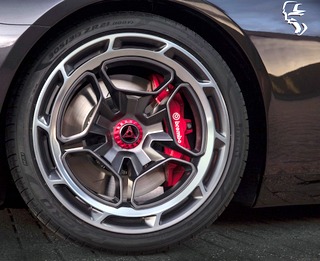Understanding the importance of these features will help you choose a model that is safe and secure. Here are five crucial car safety features that should be on the next car you buy. The post 5 Important Car Safety...
Put Safety First for You and Your Passengers
This article may contain affiliate links.
Technology is advancing rapidly, and the automotive industry has not lagged behind when it comes to prioritizing safety.
When you search used car dealership Utah, for instance, you will see a good selection of vehicles that come equipped with an array of safety features designed to protect their occupants and prevent accidents.
Understanding the importance of these features should influence your choice of a model that is safe and secure. Here are five crucial car safety features that should be on your next car.
Anti-lock Braking Systems Are Now Considered Essential
The anti-lock braking system (ABS) is a fundamental safety feature that has become standard in most modern vehicles since 2012. Before it become a mandated feature, the obvious safety benefits ensured that many vehicles before then were equipped voluntarily by manufacturers as standard.
ABS is designed to prevent wheel lock during hard braking. This allows you to maintain steering control in challenging situations.
 ABS and ESC are standard now, but can be found on many pre-2012 models
ABS and ESC are standard now, but can be found on many pre-2012 modelsIt works by pulsating the brakes rapidly. ABS ensures that the wheels keep rotating, preventing skidding on slippery surfaces.
This feature is especially valuable during emergency braking situations and helps reduce the risk of accidents caused by loss of control. Advances in ABS technology have resulted in improved safety through shorter stopping distances.
ABS is also often integrated with electronic brakeforce distribution (EBD) systems, which optimally distribute braking force to each wheel based on factors like load and weight distribution.
Electronic Stability Control (ESC) Helps Combat Loss of Traction
Electronic Stability Control (ESC) is a sophisticated safety feature that enhances a vehicle’s stability by detecting and minimizing skids. It has been a mandatory requirement for all new passenger vehicles from 2012 models onward.
ESC works in conjunction with the ABS and traction control systems. It is continuously monitoring the vehicle’s steering and braking actions. If it senses that the vehicle is losing traction or is about to skid, it selectively applies brakes to specific wheels and adjusts engine power.
This helps you to maintain greater control. ESC is also particularly effective in preventing rollovers and sideways skids.
The latest versions of ESC often use sophisticated algorithms. These are designed to detect and mitigate different skid or loss of traction scenarios. With newer models, you can also benefit from additional features such as hill start assist, to prevent the vehicle from rolling back.
 Beyond the steering wheel, advanced airbags can save lives
Beyond the steering wheel, advanced airbags can save livesAdvanced Airbag Systems Can Protect You in a Collision
Airbags have been a standard safety feature for quite some time, but modern vehicles are now equipped with more advanced airbag systems that provide enhanced protection.
In addition to front airbags, many vehicles now come with side-impact, curtain and knee airbags. These airbags will deploy based on the severity and location of the impact. This reduces the risk of injury to occupants in various collision scenarios.
Collision Avoidance Systems Can Sense a Potential Accident
Collision avoidance systems have become increasingly prevalent in new vehicles.
The system uses sensors, cameras and radar technology to monitor the vehicle’s surroundings and provide warnings or intervene to prevent collisions. Some common collision avoidance features include forward collision warning, automatic emergency braking, lane departure warning and blind spot detection.
These systems not only alert drivers to potential dangers but also take corrective action if the driver fails to respond promptly. This proactive approach significantly reduces the likelihood of accidents caused by human error.
Adaptive Cruise Control Is a New Era of Driver Aid
Adaptive Cruise Control (ACC) should be seen as an intelligent upgrade to traditional cruise control systems.
ACC maintains a set speed like conventional cruise control but adds a dynamic element by automatically adjusting the speed to maintain a safe following distance from the vehicle ahead.
Many car manufacturers have developed their own brand of adaptive cruise control, although the features are largely the same. For instance, Jaguar calls its system Adaptive Cruise Control with Queue Assist, and Mercedes-Benz describes its system as Distronic Plus.
With the help of sensors, ACC can slow down or accelerate your vehicle to match the speed of the traffic. This technology reduces the risk of rear-end collisions. It is particularly valuable in congested traffic conditions, where sudden stops and slowdowns are common.
When you are searching for your next car you might want to check how many of these essential safety features it has. Safer driving is more possible with the help of these automotive technological advancements.
The post 5 Important Car Safety Features That Should Be on Your Next Car first appeared on Clean Fleet Report.










